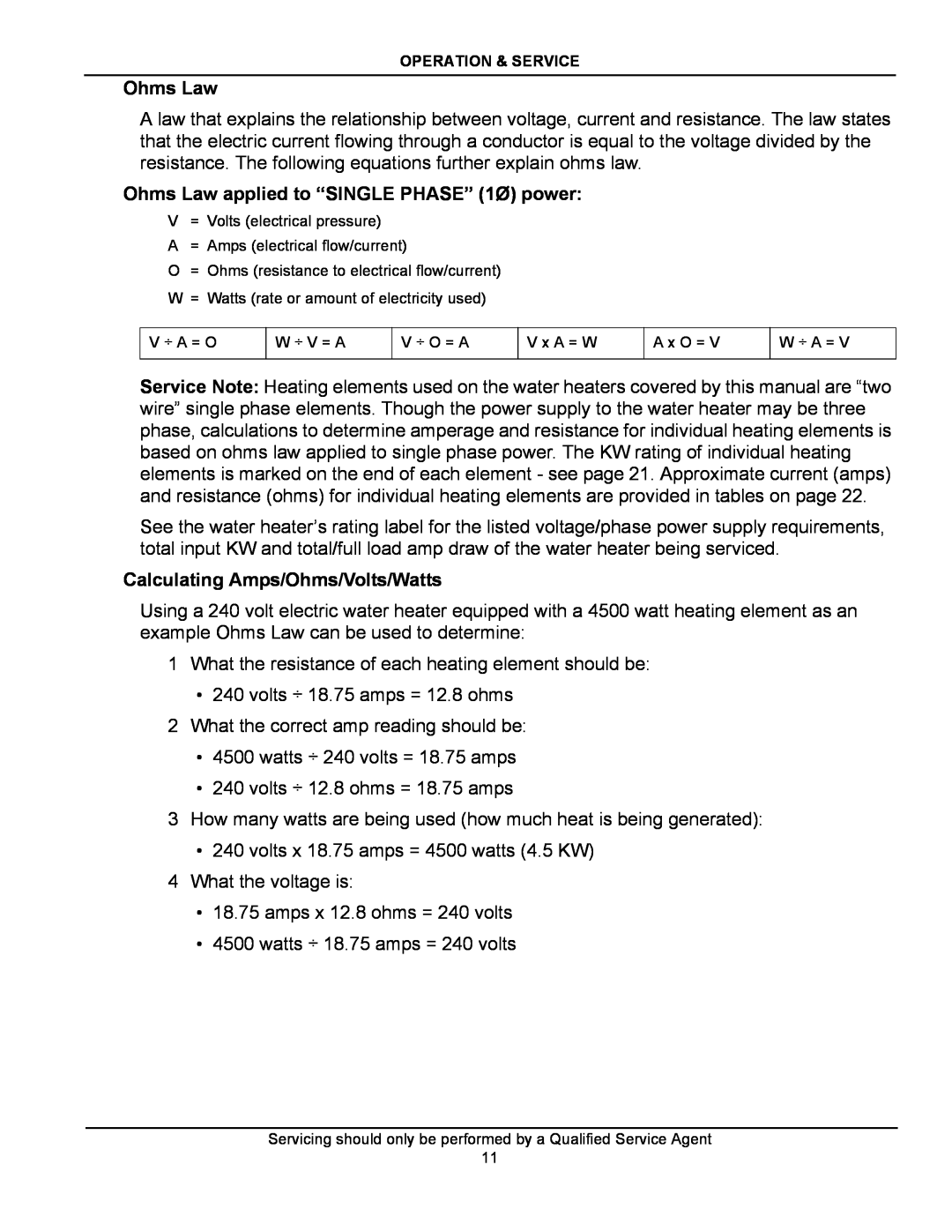
OPERATION & SERVICE
Ohms Law
A law that explains the relationship between voltage, current and resistance. The law states that the electric current flowing through a conductor is equal to the voltage divided by the resistance. The following equations further explain ohms law.
Ohms Law applied to “SINGLE PHASE” (1Ø) power:
V = Volts (electrical pressure)
A = Amps (electrical flow/current)
O= Ohms (resistance to electrical flow/current) W = Watts (rate or amount of electricity used)
V ÷ A = O
W ÷ V = A
V ÷ O = A
V x A = W
A x O = V
W ÷ A = V
Service Note: Heating elements used on the water heaters covered by this manual are “two wire” single phase elements. Though the power supply to the water heater may be three phase, calculations to determine amperage and resistance for individual heating elements is based on ohms law applied to single phase power. The KW rating of individual heating elements is marked on the end of each element - see page 21. Approximate current (amps) and resistance (ohms) for individual heating elements are provided in tables on page 22.
See the water heater’s rating label for the listed voltage/phase power supply requirements, total input KW and total/full load amp draw of the water heater being serviced.
Calculating Amps/Ohms/Volts/Watts
Using a 240 volt electric water heater equipped with a 4500 watt heating element as an example Ohms Law can be used to determine:
1What the resistance of each heating element should be:
•240 volts ÷ 18.75 amps = 12.8 ohms
2What the correct amp reading should be:
•4500 watts ÷ 240 volts = 18.75 amps
•240 volts ÷ 12.8 ohms = 18.75 amps
3How many watts are being used (how much heat is being generated):
•240 volts x 18.75 amps = 4500 watts (4.5 KW)
4What the voltage is:
•18.75 amps x 12.8 ohms = 240 volts
•4500 watts ÷ 18.75 amps = 240 volts
Servicing should only be performed by a Qualified Service Agent
11
